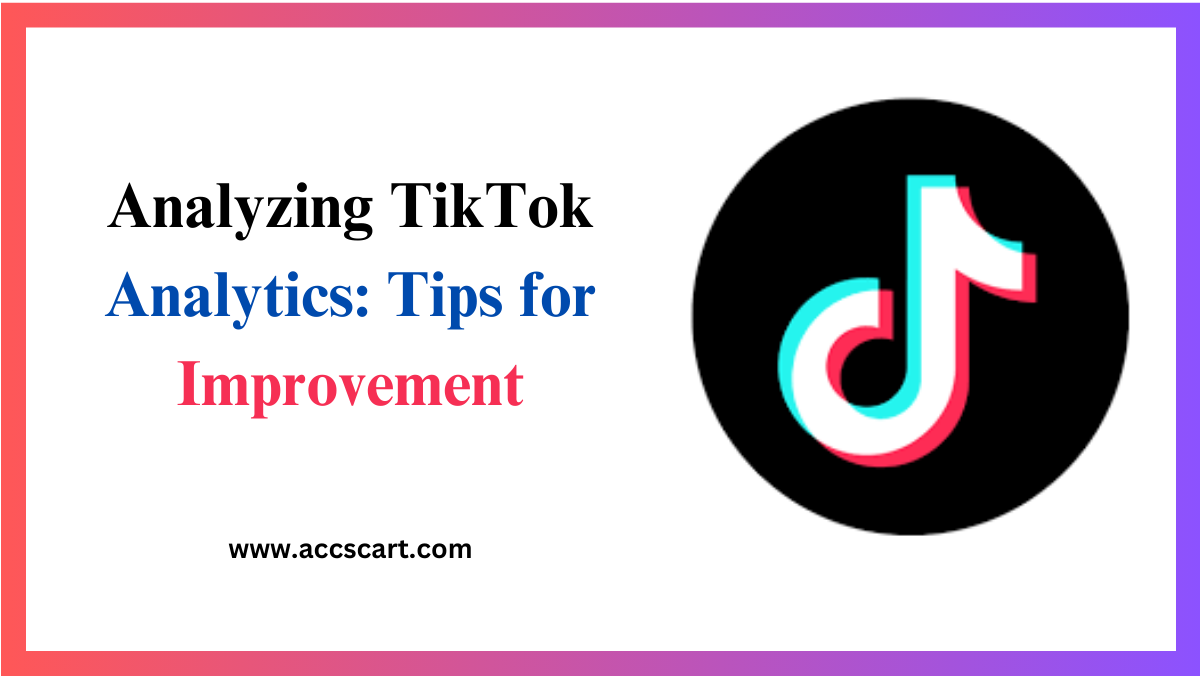TikTok has quickly become one of the most influential social media platforms in the world, with over 1 billion active users. For content creators, businesses, and marketers, understanding how to analyze your TikTok analytics is crucial to improving your performance and growing your audience.
In this blog post, we’ll explore various TikTok analytics tools, key metrics to focus on, how to interpret your data, adjust strategies based on insights, and even look at case studies of successful analysis. By the end, you’ll have a comprehensive understanding of how to leverage TikTok analytics to elevate your game.
Introduction to TikTok Analytics Tools
When it comes to analyzing your TikTok performance, you need the right tools in your arsenal. TikTok provides a built-in analytics dashboard for Pro accounts, which can be accessed through the settings menu. This dashboard offers a wealth of information that can help you understand how your content is performing.
In addition to TikTok’s native analytics, there are several third-party tools available that offer more in-depth analysis and additional features. Tools like Hootsuite, Sprout Social, and Analisa.io can provide more detailed reports and insights.
Understanding the capabilities of these tools is the first step in mastering TikTok analytics. Each tool has its strengths and weaknesses, so it’s essential to find the one that best fits your needs.

Key Metrics to Focus On
Knowing which metrics to focus on can make all the difference in your analysis. Here are some of the most crucial metrics you should be keeping an eye on:
- Follower Growth
Your follower count is a basic but essential metric. It gives you a sense of how well your content is resonating with viewers.
- Video Views
This metric shows how many times your videos have been viewed. High video views are a strong indicator of engaging content.
- Engagement Rate
Engagement rate measures the level of interaction (likes, comments, shares) your content receives relative to your follower count. This is a critical metric for understanding audience engagement.
- Average Watch Time
This shows how long viewers are watching your videos, on average. Longer watch times generally indicate more engaging content.
- Traffic Source Types
Understanding where your traffic is coming from (For You Page, followers, hashtags) can help you tailor your content strategy.
Interpreting Analytics Data Effectively
Once you’ve collected your data, the next step is to interpret it effectively. Data without context can be misleading, so it’s crucial to look at the bigger picture.
First, take a holistic view of your metrics. Look for patterns and trends rather than focusing on individual spikes or drops. For example, if you notice that videos posted on weekends garner more views, you can adjust your posting schedule accordingly.
It’s also essential to compare your metrics to industry benchmarks. What constitutes “good” performance can vary widely between different niches and industries.
Finally, consider the qualitative aspects of your data. Metrics like comments and shares can provide valuable insights into what your audience thinks about your content.
Adjusting Strategies Based on Insights
Data is only useful if you act on it. Once you’ve interpreted your analytics, it’s time to adjust your strategies accordingly.
- Content Strategy
If certain types of content are performing better than others, focus on creating more of that. Use the insights from your analytics to experiment with new content forms.
- Posting Schedule
Adjust your posting schedule based on when your audience is most active. This can significantly impact your engagement rates.
- Hashtag Usage
Analyze which hashtags are driving the most traffic to your content and incorporate them into your future posts.
- Engagement Tactics
If specific posts generate high engagement, try to replicate what made them successful. This could be the style of the video, the type of music used, or even the call-to-action.
Case Studies of Successful Analysis
- Case Study 1: Small Business Growth
A small business selling handmade jewelry used TikTok analytics to identify that their “behind-the-scenes” videos had the highest engagement rates. They adjusted their content strategy to include more of these videos, resulting in a 30% increase in follower growth within two months.
- Case Study 2: Influencer Marketing
An influencer focused on fitness noticed that their workout challenge videos had higher average watch times and engagement rates. By focusing on creating more of these videos and adjusting their posting schedule to evenings, they managed to double their follower count in six months.
- Case Study 3: Brand Awareness
A tech startup used TikTok analytics to understand that their product demo videos were driving the most traffic from the For You Page. By doubling down on this content type and optimizing their hashtags, they increased their website visits by 40%.
The Future of TikTok Analytics
The landscape of social media is continually evolving, and TikTok is no exception. As the platform grows, so do the tools and techniques for analyzing performance.
Expect to see more advanced AI-driven analytics tools that can provide even deeper insights. These tools will likely offer predictive analytics, helping you to anticipate trends before they happen.
Additionally, integrating TikTok analytics with other social media platforms can provide a more comprehensive view of your overall social media strategy.
Common Mistakes to Avoid
While analyzing TikTok analytics can provide numerous benefits, there are common mistakes that can derail your efforts.
- Ignoring Negative Feedback
Negative comments and dislikes can offer valuable insights. Ignoring them means missing out on opportunities for improvement.
- Focusing Only on Vanity Metrics
While metrics like follower count and video views are important, they don’t tell the whole story. Engagement rates and average watch times are often more indicative of content performance.
- Not Updating Strategies
The social media landscape is constantly changing, and what worked yesterday might not work today. Regularly update your strategies based on the latest analytics.
Practical Tips for Beginners
If you’re new to TikTok analytics, the process can seem overwhelming. Here are some practical tips to get you started:
- Start Simple
Focus on a few key metrics initially. As you become more comfortable, you can start exploring more advanced metrics.
- Use Templates
Many analytics tools offer templates for reporting. Use these to save time and ensure you’re capturing the most important data.
- Regularly Review
Set aside time each week or month to review your analytics. Regular reviews will help you stay on top of trends and adjust your strategies accordingly.
Leveraging Analytics for Competitive Advantage
One of the most significant benefits of analyzing TikTok analytics is gaining a competitive advantage. By understanding what works and what doesn’t, you can tailor your content to outperform competitors.
- Benchmarking
Compare your performance against industry benchmarks to identify areas for improvement.
- Competitive Analysis
Study your competitors’ analytics (if available) to understand their strengths and weaknesses. Use this information to refine your strategies.
- Continuous Improvement
Regularly updating and refining your strategies based on analytics will help you stay ahead of the curve.
Engaging with Your Community
Your TikTok analytics can also provide insights into how to better engage with your community. High engagement rates can lead to increased brand loyalty and a more robust community.
- Respond to Comments
Engage with your audience by responding to comments. This can boost your engagement rates and build a loyal following.
- User-Generated Content
Encourage your followers to create content related to your brand. This can increase your reach and provide valuable insights into what your audience enjoys.
- Contests and Giveaways
Use contests and giveaways to boost engagement and gather user-generated content. Analyze the performance of these initiatives to refine your approach.
Conclusion
Analyzing TikTok analytics is essential for anyone looking to improve their performance on the platform. By understanding the key metrics, interpreting your data effectively, and adjusting your strategies based on insights, you can significantly boost your reach and engagement. Remember, the goal is continuous improvement, so regularly review your analytics and update your strategies accordingly. Now that you’re equipped with these tips and strategies, it’s time to take your TikTok game to the next level. Sign up for Jasper for free to get started on your journey to mastering TikTok analytics today!









